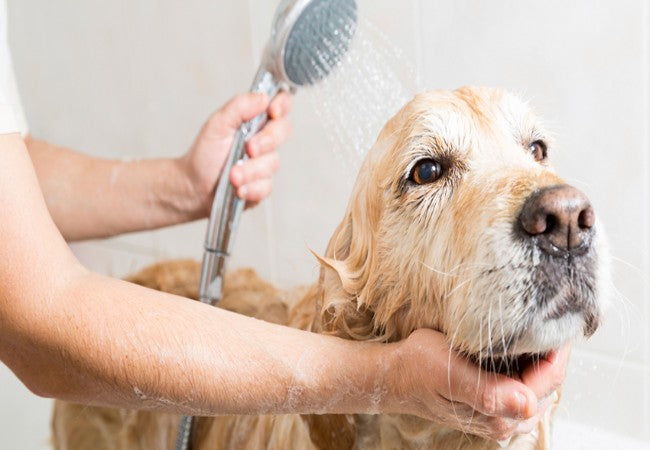Puppy Grooming Tips 2025: Vet Approved Brushing, Bathing & Bonding 🐶✨

In this article
Puppy Grooming Tips 2025: Vet Approved Brushing, Bathing & Bonding 🐶✨
By Dr. Duncan Houston BVSc
🛁 Why Grooming Matters Early
Routine grooming is about more than looks—it supports skin health, prevents matting, controls shedding, promotes dental hygiene, and keeps nails trim to prevent painful breaks. Early positive grooming builds trust and lowers stress for your puppy.
🧼 Coat Care & Brushing
Daily brushing is ideal—multiple short, positive sessions keep sessions stress-free.
- Start on the floor or table, indoors or outdoors depending on shedding.
- Start with the direction opposite growth, then follow the coat direction for shine and comfort.
- Choose brushes by coat type: soft bristle for short coats, slicker for long coats, and metal combs to check for tangles.
- Remove loose hair and distribute natural oils for skin protection.
🧴 Bathing Your Puppy
Begin grooming exposure as early as 12 weeks, ideally before serious dirt accumulates.
- Brush first to remove mats—wet mats make worse tangles.
- Use lukewarm water and pup-safe shampoo, avoiding eyes and ears.
- Bath frequency: typically every 4–6 weeks, or as needed for oily coats or messes.
- Baby your puppy during baths—treats, a calm voice, and slow introduction build positive associations.
- Thoroughly dry coat after to avoid skin issues.
✂️ Nail Trimming & Paw Care
Long nails cause pain; trimming every 3–4 weeks is key.
- Start early: let puppy sniff tools; trim one nail at a time with praise and breaks.
- Use clippers or a grinder—desensitize to noise gradually.
- Paw care: clean pads after outings, check for debris or irritation.
👂 Ear Cleaning & Eye Care
Especially important for floppy-eared pups prone to infections.
- Check weekly—wipe clean with vet-recommended solutions.
- Eyes: wipe discharge gently with a damp cloth; monitor for redness or irritation.
🦷 Dental Care from Day One
Puppy-era dental care helps prevent lifelong dental disease.
- Start brushing with a soft brush/finger toothbrush and dog toothpaste—aim daily or regularly several times weekly.
- Introduce brushing gradually with treats and praise.
- Consider VOHC-approved chews to supplement, not replace, brushing.
✂️ Salon Exposure & Professional Grooming
Introduce pups early (≥12 weeks) to groomer environments— noises, settings, stylists.
- Start with simple visits—sight, sniff, short stays—before full grooms.
- Choose groomers with puppy experience and Fear-Free techniques.
💆♂️ Stress-Free Grooming & Bonding
- Keep sessions short (3–5 minutes), end with praise and treats.
- Touch face, ears, paws, and tail frequently to normalize handling.
- Use a calm, gentle voice and rewards—create positive grooming memories.
- Consistency is key; make grooming a routine part of daily life—even a quick brush counts.
🧰 Grooming Toolkit Checklist
- ✔️ Brush appropriate for coat type (slicker, bristle, comb)
- ✔️ Puppy-safe shampoo + conditioner
- ✔️ Nail clippers and/or grinder
- ✔️ Ear cleaner & wipes
- ✔️ Toothbrush & dog toothpaste
- ✔️ Towels, treats, and wipes for accidents
- ✔️ Carrier/crate for a comfortable grooming setup
- 📱 Ask A Vet for tool selection or grooming behavior help anytime
🌟 Final Thoughts
Early, positive grooming nurtures your puppy’s health, comfort, and trust—while building your bond. Make it gentle, reward-focused, and routine-oriented across brushing, bathing, nails, ears, and teeth. Introduce professional grooming gradually, and let Ask A Vet support any personalized needs. Here’s to clean, confident pups and joyful grooming rituals! 🐾❤️
Need help choosing grooming tools or establishing a routine? Visit AskAVet.com or download the Ask A Vet app—your vet, every grooming step of the way. 📱🐶






